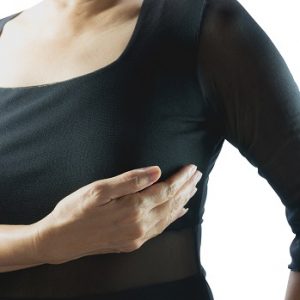
More evidence that low-calorie sweeteners are bad for your health
Studies show that artificial sweeteners can raise the risk of hypertension, metabolic syndrome, type 2 diabetes and heart disease, including stroke.

Natural Health News — New research suggests that higher levels of vitamin D are associated with decreasing risk of breast cancer.
The analysis by researchers at University of California San Diego School of Medicine, pooled data from two randomised clinical trials with 3,325 combined participants, plus a prospective study involving 1,713 participants, to examine the association between risk of female breast cancer and a broad range of serum 25-hydroxyvitamin D (or, 25(OH)D) concentrations, the main form of vitamin D in blood.
All women were age 55 or older. The average age was 63. Data were collected between 2002 and 2017. Participants were free of cancer at enrollment and were followed for a mean period of four years. Vitamin D levels in blood were measured during study visits.
Over the course of the combined studies, 77 new cases of breast cancer were diagnosed for an age-adjusted incidence rate of 512 cases per 100,000 person-years.
Official recommendations inadequate
» A new analysis suggests that getting more vitamin D could help prevent post-menopausal breast cancer.
» Data from more than 5000 women showed that blood levels at 60ng per ml has a significant protective effect; recommended healthy levels are 20ng per ml
» The authors argue for a review of minimum healthy levels in the blood, as well as for healthy daily intake levels to be raised.
Researchers identified the minimum healthy level of 25(OH)D in blood plasma to be 60 nanograms per millilitre, substantially higher than the 20 ng/ml recommended in 2010 by the Institute of Medicine, now the National Academy of Medicine, a health advisory group to the federal government.
Some groups, such as GrassrootsHealth an California-based nonprofit organisation that promotes vitamin D research and benefits, and which collaborated on this analysis, have advocated higher minimums for health blood serum levels of vitamin D, as much as 50 ng/ml, though the matter remains hotly debated.
“We found that participants with blood levels of 25(OH)D that were above 60 ng/ml had one-fifth the risk of breast cancer compared to those with less than 20 ng/ml,” said principal investigator and co-author Cedric F. Garland, DrPH, adjunct professor in the UC San Diego Department of Family Medicine and Public Health. Risk of cancer appeared to decline with greater levels of serum vitamin D.
A strong association
Even after adjusting for known risk factors for breast cancer such as age, body mass index, cigarette smoking and intake of calcium supplements, the benefits were still apparent, suggesting that increasing vitamin D blood levels substantially above 20 ng/ml could be important for the prevention of breast cancer.
According to Garland, who has previously studied connections between serum vitamin D levels and several types of cancer, said the study builds upon previous epidemiological research linking vitamin D deficiency to a higher risk of breast cancer.
“This study was limited to postmenopausal breast cancer. Further research is needed on whether high 25(OH)D levels might prevent premenopausal breast cancer,” Garland said. The population was also mainly white women so further research is needed on other ethnic groups.
“Nonetheless, this paper reports the strongest association yet between serum vitamin D and reduction in risk of breast cancer,” Garland said.
Results were published in the journal PLOS ONE.
Years of advocacy
Garland and others have advocated the health benefits of vitamin D for many years. In 1980, he and his late brother Frank C. Garland, also an epidemiologist, published an influential paper that posited vitamin D (produced by the body through exposure to sunshine) and calcium (which vitamin D helps the body absorb) together reduced the risk of colon cancer. The Garlands and colleagues subsequently found favourable associations of markers of vitamin D with breast, lung and bladder cancers, multiple myeloma and adult leukaemia.
The current recommended average daily amount of vitamin D3 is 400 IU for children up to one year; 600 IU for ages one to 70 years (including pregnant or breastfeeding women) and 800 IU for persons over age 70, according to the National Academy of Medicine.
To reach 25(OH)D levels of 60 ng/ml, said Garland, would generally require dietary supplements of 4,000 to 6,000 international units (IU) per day, less with the addition of moderate daily sun exposure wearing very minimal clothing (approximately 10-15 minutes per day outdoors at noon). He said the success of oral supplementation should be determined using a blood test, preferably during winter months.

Please subscribe me to your newsletter mailing list. I have read the
privacy statement